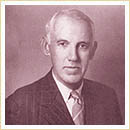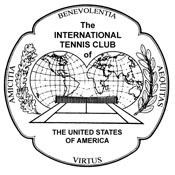International Club History

The initial idea of the International Club was conceived at the 1923 Wimbledon
Championships, when a former British Prime Minister, Arthur Balfour, was chatting
with Wallis Myers, an outstanding writer on lawn tennis. Uppermost in Balfour's
mind was the prospect of promoting international goodwill by friendship across
the net. Meyers, was not one to let such an opportunity pass, and on the 26th November,
1924, the I.C. of Great Britain was formed. In the following year, steel grey and
pink were selected as the Club's colors. The I.C. was to foster friendship, pure and
uncommercialized.
In 1929, Jean Borotra was approached by Wallis Myers and Lord Lyle to form a Club in
France in what the former described as an "extension of the British franchise." Mr.
Borotra was the first Chairman of the French Club and participated actively right up
until his death in 1994. He regarded tennis as a lifetime game and as a model for the
young in demonstrating that it is possible to continue to play throughout a long life
while carrying on a career outside lawn tennis. Other nations followed suit, the USA
and Netherlands in 1931, Czechoslovakia in 1933, Sweden in 1937, and, following World
War II, many more until now there are 34 I.C.'s around the world. Each Club organizes
its own annual program to achieve the objectives set forth in the constitution. Matches
are played between International Clubs which have, over the year, enabled international
players to maintain their friendships achieved through tennis.
Many Clubs assist the young tennis players of their own country by taking them on matches
abroad or holding competitions for promising young players. Many regard the I.C.'s as an
opportunity to retain their links with the game and an opportunity to put something back
into the game after an active playing life has come to an end. Most clubs will entertain
visiting players on the occasion of their country's major tournament. At Wimbledon, the I.C.
of Great Britain holds a Reception at the Hurlingham Club and gives a Dinner Dance on the
weekend before Wimbledon. The I.C. of the United States participates jointly in a dinner
during the US Open with the International Tennis Hall of Fame. The IC Clubs of Australia
and New Zealand host dinners during their National Championships.
In June 1949, the Council of International Clubs placed on record that the regulations and
administration of the game, and of lawn tennis in general, was not the function or concern
of International Clubs but that International Clubs should aid their respective National
Tennis Associations in every reasonable way. The Council also emphasized that the game of
lawn tennis and all that it stands for in promoting international goodwill and comradeship
truly be served by close co-operation of International Clubs with national associations,
and vice versa.
Thus the I.C's have never become involved in the politics of lawn tennis and they represent
an ideal arena in which lawn tennis can be played free from the politics of the world game
and pressure from commercialism.
USIC Seal
 The Seal of the International Clubs was adopted in 1949. The outline of the seal is a silhouette
of a tennis ball divided into four equal parts. These may be considered as North, South, East and West.
In each section is placed a Latin Word. These four words symbolize the ideals of international tennis.
At the top is the word BENEVOLENTIA which means "Goodwill." At the bottom, the foundation of the Seal,
is built the word VIRTUS. This means "Valour, Courage and Bravery."
The Seal of the International Clubs was adopted in 1949. The outline of the seal is a silhouette
of a tennis ball divided into four equal parts. These may be considered as North, South, East and West.
In each section is placed a Latin Word. These four words symbolize the ideals of international tennis.
At the top is the word BENEVOLENTIA which means "Goodwill." At the bottom, the foundation of the Seal,
is built the word VIRTUS. This means "Valour, Courage and Bravery."
In the left side is the word AMICITIA which means "Friendship." In connection with this word is the oakleaf,
which is the symbol of strength, so it can be interpreted as strong friendships which are established through
tennis. On the right side is the word AEQUITAS which means "Sportmanship." Placed next to this word is the
laurel, which is the symbol of Victory, to associate the ideas of victory through sportmanship.
In the center of the Seal are placed the Eastern and Western hemispheres which are joined under international
tennis. On this are shown all the countries of the world. The tennis court, which is drawn as it is viewed
by a tennis player, faces the design of the International Club will have, in opposition, players from all
over the earth. The player, as he views the court, will see on the other side of the net, the two hemispheres
which will symbolize competition in worldwide terms. The oakleaf design was made from an actual oakleaf picked
from an oaktree in front of Longfellow's famous Wayside Inn. The laurel was made from drawings of early Roman
designs.